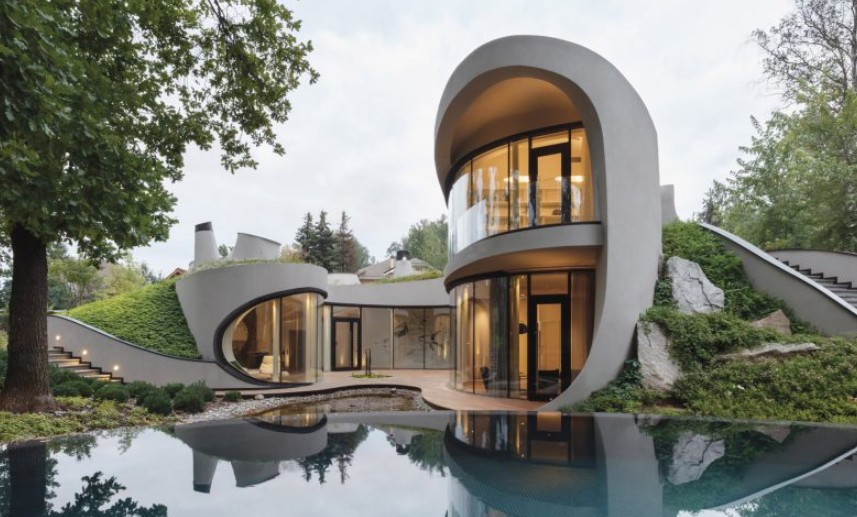
Emerging Ideas Redefining Modern Home Construction
Key Takeaways
- Midcentury modern design and warm interiors are gaining popularity.
- Smart home technology and wellness-focused features are becoming standard.
- Open floor plans and smaller square footage homes are trending.
- Energy efficiency and sustainable materials are prioritized.
- Multigenerational living and accessory dwelling units (ADUs) are on the rise.
The Rise of Sophisticated Style and Comfort
The custom home building landscape is transforming in 2025, as discerning homeowners increasingly seek stylish, comfortable living spaces that blend innovation with classic design. Midcentury modern design, celebrated for its timeless appeal, is making a strong comeback—striking a balance between sleek lines and organic forms. Meanwhile, a shift toward warm, earthy palettes, such as terracotta and ochre, is replacing clinical white interiors, enveloping modern homes in a sense of inviting tranquility. In metropolitan regions, such as Dallas, these trends are especially pronounced, with builders focusing on luxurious spaces that embody both aesthetics and functionality. For those considering a custom build, exploring modern luxury homes Dallas can be an inspiring first step in the journey toward creating a dream home. The move toward warmth and comfort aligns with the demand for functional living spaces. Homeowners are prioritizing environments that support daily life through both layout and design materials. This growing emphasis is not just about visual appeal but about fostering well-being and ease in every room of the house.
Integrating Smart Technology for Seamless Living
Smart home technology is quickly becoming a standard feature in custom-built homes. Today’s homeowners expect pre-wired spaces that accommodate everything from lighting automation and climate control to security and entertainment systems accessible directly from their smartphones. Builders are proactively integrating these technologies during the planning phase, offering personalized solutions that enhance safety, convenience, and energy management. Even voice-controlled assistants and home automation hubs, once regarded as luxury add-ons, are now considered foundational to a modern floor plan. As families grow more reliant on connected devices, the push for homes that adapt to busy lifestyles gains momentum.
Wellness-Centered Design for Healthier Living
A new wave of wellness-centered design is reshaping custom homes. Beyond open layouts and modern kitchens, features like meditation nooks, home gyms, saunas, and spa-inspired bathrooms are becoming essential inclusions. Natural light, enhanced indoor air quality, and biophilic details such as air-purifying plants create spaces that nurture both body and mind. Homeowners are becoming increasingly aware of how elements like acoustics and airflow contribute to their comfort, leading to architectural choices that reduce noise and promote relaxation.
Open Floor Plans and Right-Sized Living
The preference for open floor plans persists, but with a twist: New builds in 2025 are trending toward more modest overall square footage. Instead of sprawling layouts, families are gravitating toward homes that prioritize versatile, flowing communal areas and multifunctional rooms. This movement aligns with the desire for sustainability—smaller homes boast lower energy consumption and require less ongoing maintenance. By focusing on quality over quantity, homeowners are curating living spaces that support contemporary lifestyles and flexible needs.
Focus on Energy Efficiency and Eco-Friendly Materials
Energy efficiency and sustainability remain driving forces in custom home building. Advanced insulation, high-efficiency HVAC units, and top-tier windows and doors are now expected inclusions. More builders are specifying materials such as hempcrete, reclaimed timber, and other responsibly sourced resources to minimize their environmental impact. Choosing local materials not only supports regional economies but also reduces a project’s carbon footprint.
With rising awareness of climate change, many homeowners are educating themselves on the green building movement.
Growing Demand for Multigenerational Living and ADUs
Multigenerational living is on the rise, driven by both cultural shifts and practical necessity. New custom homes are being designed with independent suites, flex rooms, and separate entrances to provide privacy and autonomy for multiple generations under one roof. Accessory dwelling units (ADUs) have also gained traction, serving as extra living quarters for aging family members or guests, or as income-generating rentals. This versatile approach to home design enables families to maximize space and adapt to changing life stages, whether integrating aging parents or providing young adults with greater independence.
Designing for Resilience Against Natural Disasters
With unpredictable weather and an increase in natural disasters, resilient home design is becoming an essential consideration for custom builders. Reinforced foundations, impact-resistant windows, fire-retardant materials, and raised elevations are some of the features being brought into new builds to maintain safety and durability during extreme events. Not only does this improve peace of mind for homeowners, but it also helps mitigate insurance costs and future repair expenses.
Conclusion
A careful blend of modern design, technological innovation, and thoughtful, sustainable living defines the custom home building industry in 2025. Homeowners seek more than just stylish spaces, as they desire efficiency, flexibility, and wellness features designed to support every stage of life. Builders who stay attuned to these evolving trends are better equipped to deliver homes that deliver lasting value, combining comfort, function, and resilience in every detail.